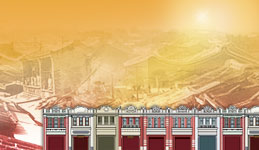          

|
|

|
 Early Development
Early Development
The year of the “no sky” street area's
emergence is still uncertain but most books are very certain about the
range of the “no sky” street area. The “no sky” street area emerged as
the development of streets and the outbreak of drastic population
growth. To react to the population growth and the need of land, the
streets started to stretch from the earliest
Yaolin
Street, Putou Street, and Beitou area to the port along
the river between Sinan Temple and Tienhou Temple. These streets built
in early times are all called old street, including Putou, Dayou, and
Yaulin (near the Lukang post office) Streets, associated with Mishih
Street, Singankou, extended to Shihsia, Bandian Street and the Jiewei
area, forming zonal streets.
|
|
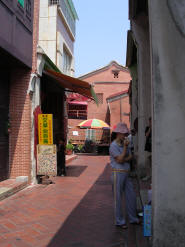 |
|
Today's Yaolin Street |
 TOP
TOP |
 Construction of the "No Sky" Sstreet
Construction of the "No Sky" Sstreet
With the development of Lukang's
commerce, the old street was not enough because after the boost of
commerce, bigger land is required for commerce so the old street wasn't
good enough. Therefore, Lukang businessmen discussed about solving the
lack of land problem. It is considered that during
Cianlong
toJiacing period, after the residents' discussion, it was
decided that all of the residents would build the Wufu Street, i.e. the
main street later, together to make it the major trading place. The main
street was 7 km in length and 7 meters in width. The trading place was
more human and ideal than that in the old street. Thus the main street
replaced the old street and became the new trading place. |
|
 TOP
TOP |
|
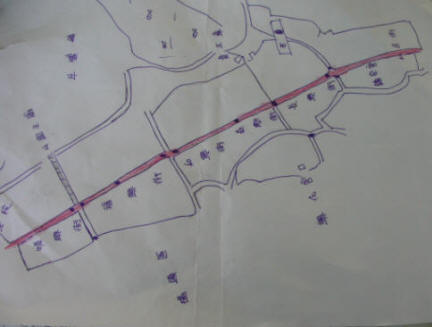 |
|
Wu Fu street (red line) |
|
|
 Wu-Fu
Street
Wu-Fu
Street
Although the so called Wufu Street had only one
street name, it included five main streets in reality. The
five
streets were Shunsing Street, Fusing Street, Hesing
Street, Taising Street, and Changsing Street. Plus the Bandian Street
near the end of the street would complete the “no sky” street area in
which pavilions were meant to block the strong wind and big sun. The
streets of the “no sky” street area were very long and pavilions were
built in front of each store, so this should have been decided by all of
the stores. It could never be an independent decision of a single or
part of the stores. Judging from this, the development of the “no sky”
street area should be based on the collective spirit of local stores. It
is obvious that the merchants in the “no sky” street area were powerful
at that time and even exceeded the government.
 TOP
TOP |
|
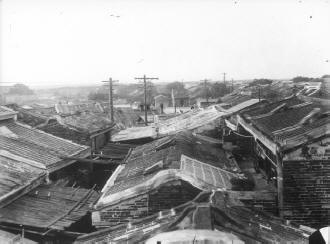 |
|
The " No
sky" street |
|
|
|
|
 Reconstruction of the
Street
Reconstruction of the
Street
The prosperity of the Wufu Street had lasted until
late Cing dynasty (during the Guang-Shi period), and it was inferred
that after the
Japanese occupation, due to the silt
of harbor and the influence of other competitive harbors, it was no
longer as prosperous as before. After the Cing government officially
ceded Taiwan to Japan, large amount of businessmen returned to mainland
China and led to the drastic decline of the “no sky” street area. During
the Showa (Japaneses Emperor of the time) period, in order to break the
typical cohesion of society, Japanese started to modify the downtown
area in 1934 and officially ended the history of the “no sky” street
area.
|
|
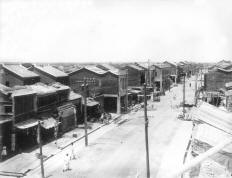 |
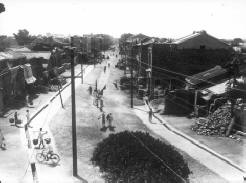 |
|
Modification of the street |
Another look of the
modification |
 TOP
TOP |
|
In the eyes of Japanese, commercial
organizations with strong cohesion such as the merchants in
the “no sky” street area impeded the Japanese colonial
policies. Meanwhile, to solve sanitary problems and
construct a road network in case of war, it was necessary to
modify the downtown area. Lukang started to modify its
downtown area but excluded “no sky” street area. The
environment of the “no sky” street area, however, was dark
and humid and violated the sanitary regulations, so in
1934, the first part of
the houses beside the street was deconstructed. Until then,
the once prosperous “no sky” street area lasted from
Cianlong to Jiacing period to 1934 and finally became
history and became memories in people's mind. |
|
《Next
Commerce…》 |
|
|

